| Zeitschrift Umělec 2003/3 >> THIN CZECH LINE | Übersicht aller Ausgaben | ||||||||||||
|
|||||||||||||
THIN CZECH LINEZeitschrift Umělec 2003/301.03.2003 Jiří Ptáček, Arlene Tuckerová | geschichte | en cs |
|||||||||||||
|
Things You Don’t Know, K&S, Berlin,
Nov. 20, 2003 – Jan. 17, 2004 An evening walk down Linienstrasse avenue is disheartening. Every second or third shop window warmly glows in its exclusivity, the wide halls behind a sterile white decorated with insta-art installations. The surplus of Capital is obvious, but the result is an investment into a luxurious mountain sanatorium. Digressions down side streets bring no relief: this is a gallery neighborhood. The only way out is to go straight ahead, cross the intersection and emerge among the ugly blocks of flats from the “epoch of the wall.” There is an absence of creativity here as well, but it is an older absence and therefore life has worked its way in, knocking off corners and flaking away the polish. My mood buoys once I escape the pricey plastic surgery of Linienstrasse and my eyes rest on more living embers. My sojourn down Linienstrasse was a mistake. I couldn’t find K&S Gallery, where curator Karel Císař had invited me to come check out his exhibition Things You Don’t Know. When the exhibition was still in its formative stage, Umělec nominated Císař as one of three European theoreticians to take part in the project Her und Hin (Here and There). The Romanian magazine IDEA (then called Balkon) nominated Atilla Tordai and the Turkish representative through the Istanbul magazine Art-Ist was Erden Kosova. All three stayed in Berlin for a few months and initiated an integration of artists from their countries with the residents of two cooperating institutions: the Academy Schloss Solitude and Künstlerhaus Bethanien. Eastern Europe can only dream about this: they provided support for the young artists and their work and encouraged the enjoyment of international fusion and communication. The Czech participants with the support of Allianz Kulturstiftung stayed on longer in Berlin, and the exhibition was a final gesture and illustration of what had inspired them in the new milieu. Umělec was to arrive after the battle and decide whether the nomination of Karel Císař had been a wise one. As I said, K&S is hard to find. Unfortunately, and thank the Lord, it has no shop window, just a door and metal stairs leading into the basement. You have to ring a bell to get inside. The “things we don’t know” were spread around both halls of the gallery and in the intimate mezzanine. At first sight it was another perfectly arranged space, and within it a perfectly implanted exhibition. If the power of a collective exhibition lies in interference, then someone with an experienced and sensitive mind had made the installation. The works did not hobble each other but they did comment on each other in every possible way. The constellation looked like an intimate renaissance composition. The art production on Linienstrasse was a spastically thorough whoring oriented towards the random walk-by. But K&S, removed from street level, was a self-existing cell with its own internal rules. There was a curatorial lightness but not negligence, every participant was introduced with distinct brevity. These were unforeseen but surprising positives. However a visit to Things You Don’t Know revealed a different, paradoxical, even more praiseworthy face: there was distance from the gallery context through the very art that had been made for it. The mixture of Czech and foreign art didn’t come off as an insubstantial demonstration that art in the Czech Republic is comparable to art abroad. It was a balanced individual commentary on a single theme: we live in an urbanized world which has completely overwhelmed our consciousness. The attempt to come up with a whole solution is a vain and disappointing effort for the individual. So instead this was a looser flirtation and exploration of what is being carried on the surface of the waves. The British group Inventory documented this most clearly. “Losing, Finding, Collecting” is their slogan. They gather information, collect visual material and compose partial studies on various phenomena and put it in their own magazine. In Berlin they exhibited a magazine, the back sides of refrigerators and the ad cards of the English prostitute Charlotte. The three fridge doors show how Inventory is searching for a socio-psychical structure within the fragments of used things. The same goes for Charlotte, who has probably mastered all sexual practices and who peppers her vocabulary of lascivious challenges according to her latest offer, starting with the unimaginative “Call me” and ending in inky-black humor. Tomáš Vaněk (Czech Republic), Johan Zetterquist (Sweden) and Robin Rhode (Republic of South Africa) were responsible for the more playful visions of reality. For some time now Vaněk has been spraying interior design elements where they don’t belong, or where he thinks they’re missing. In K&S he once again used sprays and stencils: in the entrance hall he painted inappropriate industrial cables and over the stairs to the mezzanine a “railing.” The railing may have been a comical optical illusion that disturbed the particular character of the space, but the cables never revealed why they were there. Maybe there was a certain capriciousness in it that one could fall for, but for “Czech eyes” who know Vaněk’s other “particips” well, it was also a routine work. His notable signature project made for the public library, where you could go after the exhibition to take a look at Vaněk’s handmade books drawings, remained in the shadow of this unsuccessful, but more forceful work. A close investigation of Johann Zetterquist’s gigantic half abstract sculpture and half 3-D physical plan of wooden model house revealed the surprising discovery of a parking lot on the roof (for matchbox cars). And like Vaněk’s sprays, Rhode’s two photo-stories also worked with the surroundings, but were developed into gags. In a series of eight color pictures you see a coat rack painted a wall and then a growing pile of clothes as people unsuccessfully try to hang their coats on the painting. Rhode re-codes the environment and the “actors” to perform a scene in which the depiction of the object the object itself have merged. But without a doubt it was Jesper Alvaer who was able to provoke and document the entire action. Three Japanese men were given the task of gluing together a model of a battle cruiser, and he recorded their effort in a regularly sequenced video. If he hadn’t spliced in longer shots of different transportation vehicles the video would have come across as being pornographically cold, just a flow of information and emotions. Thus it lost this pornographic level and the staged assembly of the model became a meaningful, representative symbol for real movement. The introspection found within the seemingly impersonal elements brought him closer to the photography of Markéta Othová. With two photos she recorded a single window: the first contains the mass-concrete framing and the second is a close-up of the window. Once again her voyeuristic instincts combined with an act of non-disclosure: the window pane is only half-transparent, and only hints at what is behind it. She draws on the human temptation to peek into city windows to try and discover what is not our business, whether we suffer from the obsessive collecting of information, curiosity, or only want to find out what our neighbors are like. There is a long tradition of the gallery being a place in which the most obscure mental models are allowed to take shape. Nevertheless an altogether different facet comes to the fore in the context of Things You Don’t Know: the importance of transmitting an experience through a medium into the gallery, and Othová’s and Alvaer’s main concept is the indication of an experience which comes after we leave the gallery. Ján Mančuška also showed an experience but in a different way. He crisscrossed black tape through his hall. Written on the tape was a description of the process of making and hanging the tape. As you read the words you follow in his footsteps, repeating the experience. Nothing less, nothing more. The hottest and under appreciated candidate for the Jindřich Chalupecký Prize showed that after the exhausting do-it-yourself semantic twists using domestic objects he is once again in form. Karel Císař has put on an important exhibition about the shifts within Czech visual culture. In subtle relations to foreign art he has shown that domestic art is also emphasizing situational moments, and he has assigned the task of developing a strategy, subjectively gradated orientations in the world, whose non-commitment comes from the minority task of the artistic activity within it. In this respect, the intimate renaissance composition from Linienstrasse has sent a memorable report home. “ Inventory is a means of writing, recording, reclassifying and categorizing the social material life that exists around us. This is our goal, to take measures that bring about a cataract where hierarchical distinctions between things, between their values, becomes impossible, indeed, POINTLESS.” The themes and discussions in this “sporadic journal devoted to material culture and maverick thought” stimulate, challenge and propose thoughts and images that most individuals forget to dwell on. The eclectic gang of writers touches on subjects of all kinds: offensive, beautiful or just plain facts that intrigue. Laurent Van Lanckers once wrote an account of the different uses of karaoke in Vietnam, while Simon Neville observed the relationship between clairvoyance and anxiety. Other contributing writers include Nick Norton, Neil Cummings, Keith Miller, and Calum Storrie. These artists, writers and theorists create a philosophical and sociological dialogue with the reader, making this web of a world a lot more thoughtful. Inventory magazine was first published in 1995 by three former Chelsea MA students, Paul Claydon, Adam Scrivener and Damian Abbott, with the first issue coming out while they were still at Chelsea. Robin Rhodes (b. 1976) makes use of his experience among the subcultures and criminal elements of tough neighborhoods, and is expressed in his pride and respect for graffiti paints. He is inspired by his childhood memories of Cape Flats, South Africa which come out in his physically animated chalk street drawings. During his artist in residency at the South African National Gallery he created work dealing with urban crime. Rhode is the sixth artist to be commissioned for the FNB Vita Art Prize 2001 and he is a graduate of the Technikon Witwaterstrand. “I have been working extensively with video and performance art by alluding to formalism while actually engaging with very gritty and personal subject matter. I am as serious about my subject — a personal experience of rough Johannesburg neighborhoods and their criminal subculture — as I am about making art. These experiences have inspired me to commit myself to the processes required in the making of contemporary art. My sculptural pieces have involved the construction of barcoding as a form of colloquial or encoded sub-cultural language. My interactive pieces can be seen as an attempt to foreground the way objects function as signs before people see them as material things.” Rhodes gives his art what he calls, “real life form,” which blends in with his stress on education, entertainment and the interaction of two-dimensional drawing with the three- dimensional (often himself). Rhodes has invented a word and life philosophy that he believes should be consciously applied at least once a day. “Selfinkoozament” — having a proper sense of one’s own dignity and integrity (‘Kooza’ is derived from a Venda word meaning support). Besides his performances in the show Softserve, Rembrandt van Rijn Gallery, and other venues in South Africa and abroad, he is also producing a short film called Persona non Grata. He’s currently doing research for a book on local graffiti art, tentatively titled Against the Wall. For New Year’s Eve, Rhode was be one of the Johannesburg artists to take part in the global fax art project, Wrapping the World. Johan Zetterquist is an artist with a passion for heavy metal. His teen years of jean jackets, tennies and an amp full of heavy metal ballads in small town Värmland, Sweden moved him to make art that dissects not only this music genre, but also the impact it has on rural communities. He and artist Marc Swanson, who also head banged, but in New Hampshire, USA, touched on this subject in the exhibition, God Bless the Children of the Beast at Tensta Konsthall in Stockholm (1998). Later in, 2001, Zetterquist, Roger Andersson, and Peter Geschwind collaborated on the show Honest Blue Eyes, presented in Quebec, Canada. The scattered installation was inspired by a popular Swedish soap opera, personal reflections on the natural world, and of course the beloved heavy metal. This collaboration evolved into Bifurication, which addressed darker themes spawned by pop music and teen culture. Currently Zetterquist is working on proposals for public spaces that deal with the natural vs. the unnatural — a dichotomy he believes to be completely false. The mixed media installations portray his conviction that evolution will inevitably run amok. Zetterquist, born in 1968, was trained at Valand’s School of Art, Gothenburg, and he currently lives and works in Berlin, where he recently held the Swedish IAPSIS residency at Kunstlerhaus Bethanien.
01.03.2003
Empfohlene Artikel
|
|||||||||||||
|
04.02.2020 10:17
Letošní 50. ročník Art Basel přilákal celkem 93 000 návštěvníků a sběratelů z 80 zemí světa. 290 prémiových galerií představilo umělecká díla od počátku 20. století až po současnost. Hlavní sektor přehlídky, tradičně v prvním patře výstavního prostoru, představil 232 předních galerií z celého světa nabízející umění nejvyšší kvality. Veletrh ukázal vzestupný trend prodeje prostřednictvím galerií jak soukromým sbírkám, tak i institucím. Kromě hlavního veletrhu stály za návštěvu i ty přidružené: Volta, Liste a Photo Basel, k tomu doprovodné programy a výstavy v místních institucích, které kvalitou daleko přesahují hranice města tj. Kunsthalle Basel, Kunstmuseum, Tinguely muzeum nebo Fondation Beyeler.
|







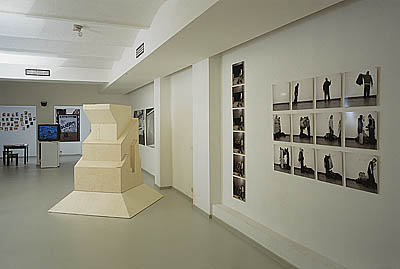









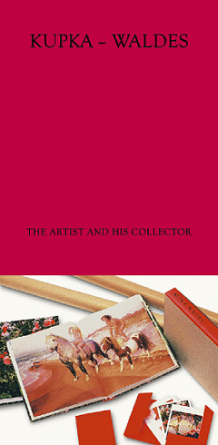











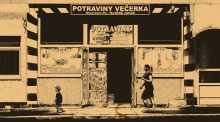
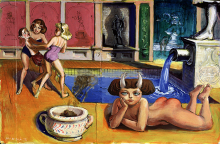
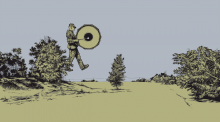
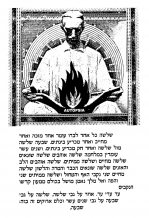


 We Are Rising National Gallery For You! Go to Kyjov by Krásná Lípa no.37.
We Are Rising National Gallery For You! Go to Kyjov by Krásná Lípa no.37.
Kommentar
Der Artikel ist bisher nicht kommentiert wordenNeuen Kommentar einfügen